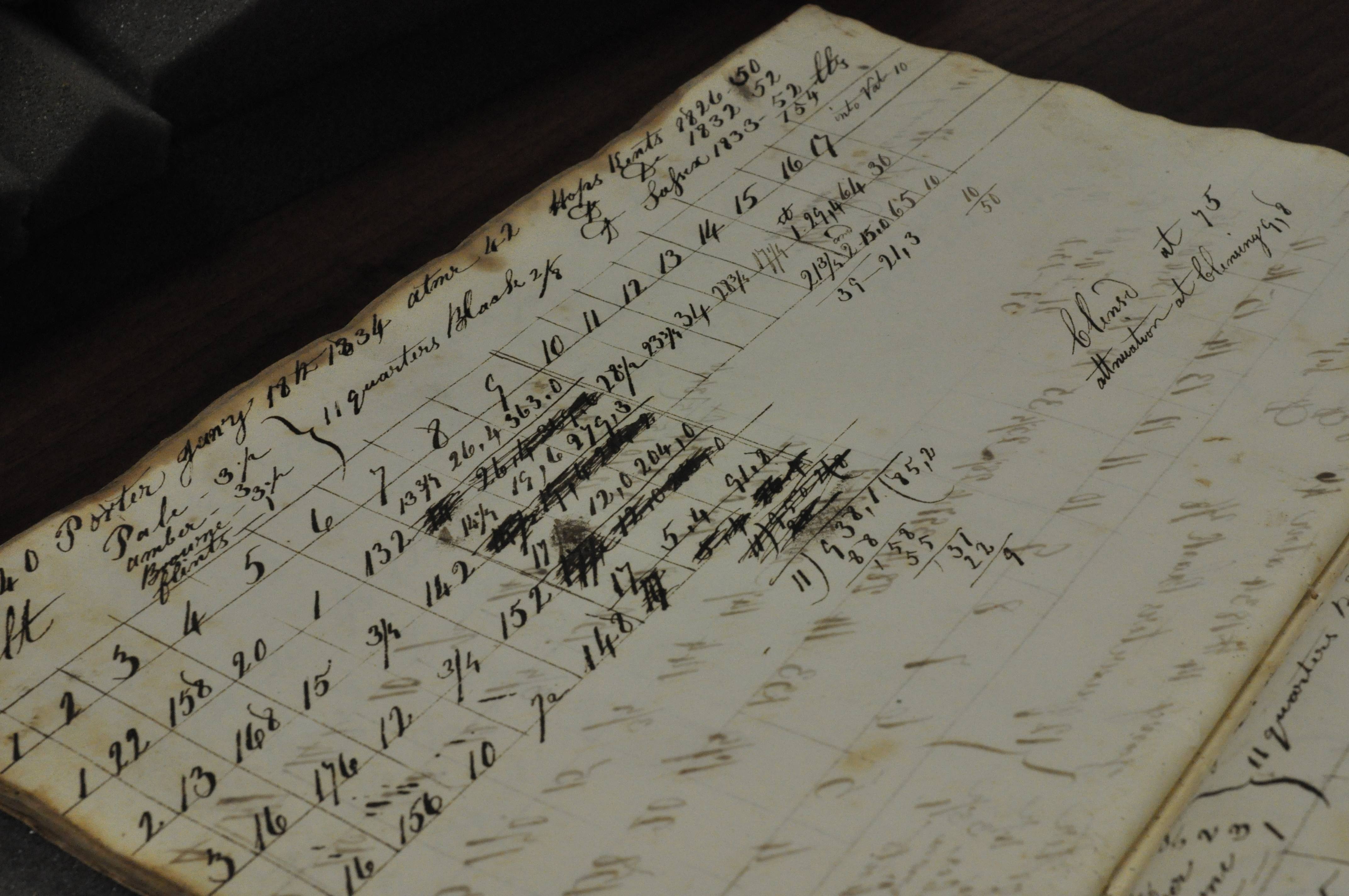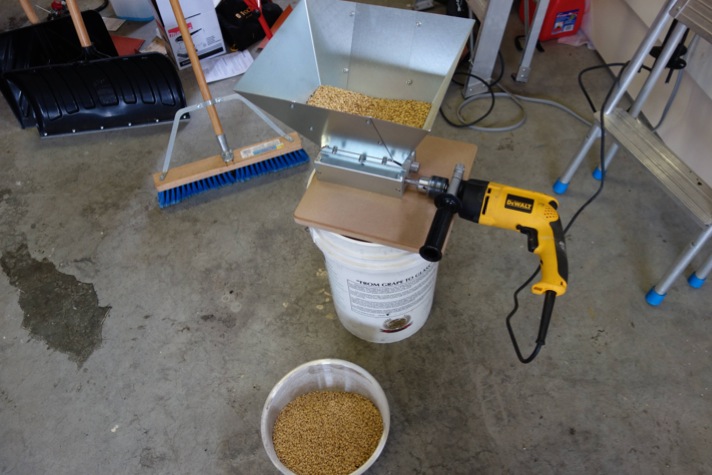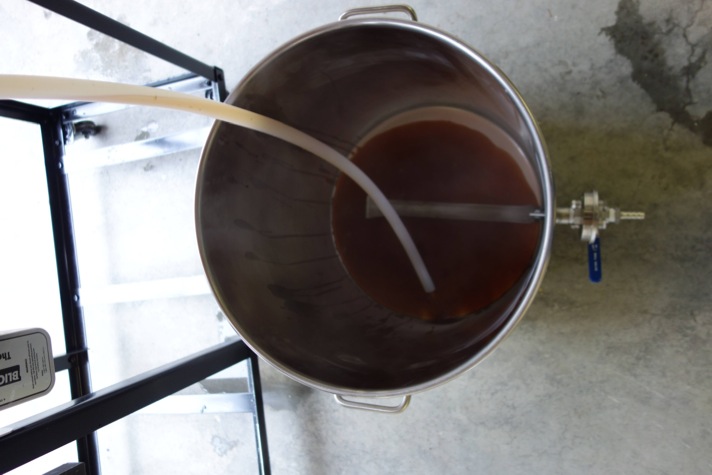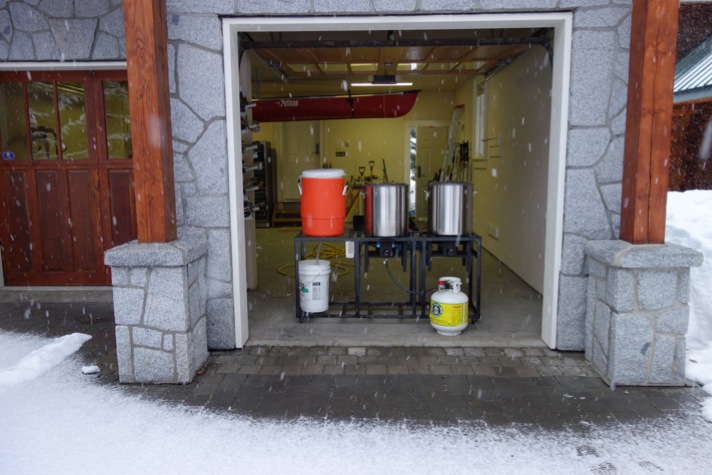Trouble Brewing
Anyway, I was reminded of the cheesy pun in the book’s title a couple of weeks ago when I had my own trouble brewing. This wasn’t a huge surprise, as I was brewing the first batch with my new homebrewery, and you expect a certain number of teething issues. I have to say, despite a pessimistically early start to the day, even I didn’t expect the 12 hour + monstrosity of a brew day that was to come. And I didn’t even have any homebrew in the fridge to numb the pain. The horror.
Come to think of it this beer was cursed from the start. When I went to the homebrew shop I managed to spill 5 kgs of pale malt on the shop floor 5 minutes from closing time. Apologies to the very patient guy who helped clear that up. And for some reason I chose a style for the inaugural brew that I’ve never managed to brew the way I want it. That style was a Red Ale- more specifically, somewhere between an American Red Ale and an Irish Red Ale, a bit of a difficult sweet spot to hit. Between the two, because I’ve never been a massive fan of Red Ales which are really just IPAs with a bit more colour, and although I like the fuller body of an Irish Red, they can get a bit cloying with their traditionally low bitterness levels. So what I wanted was a beer with a decent crystal malt character (but not too much) backed up by a bit of bitterness and some hop aroma. And of course, probably most importantly, it had to be just the right colour. Because above all great Red Ales have to look right as well as being tasty. Which all meant that, whereas with say an IPA I could have sat back and worried about one thing, getting enough hops in, with a Red I gave myself three things to think about- colour, body and hop character.
From the beginning then this was always quite likely to be a beer that was either glorious or catastrophic. To be honest, things started to go downhill pretty quickly as well. Cockup number 1 came in the form of my new monster 2 malt mill. I have to say, hats off to the mill itself, it’s a total beast, and ate through 10 kg of pale, crystal and black malts in about 2 minutes. Which is even more impressive considering that the rollers out of the box were set so close together that they ground the whole lot pretty much to dust. The result- a mega stuck mash that took almost 3 hours to clear, although admittedly at a pretty ridiculously high efficiency level. Lesson learnt- don’t trust the manual when it says to leave the settings where the are- my rollers must have shifted in transit, and in fact the seal on the box was already broken, so who knows. What I do know is that I’ll be re-adjusting them for next time.
So far, positives to draw included the speed with which the Canadian Tire patio burners had managed to heat up the absolutely freezing tap water to strike temp. From about 5 to 75 degrees took 20 minutes, a pretty substantial improvement on the hour or so my electric system in the UK would have taken.
However, that heating power came back to bite me spectacularly when I finally got the runoff finished and the kettle on to boil. Thinking I had a bit of time to finish calculating and weighing out my hop bill, I took a bit of a break and stood watching the propane do its job while I wondered whether I was suffering from Carbon Monoxide poisoning or just feeling a bit sleepy. What I hadn’t bargained for though was the reduced boiling point caused by my 600 metres of elevation above sea level. And so, as I stood there watching, the wort hit 94 degrees and exploded out of the kettle before I could get any hops in to try and calm it down. Result- much lost wort and a horrible clean up job at the end of the day. Second lesson learnt.
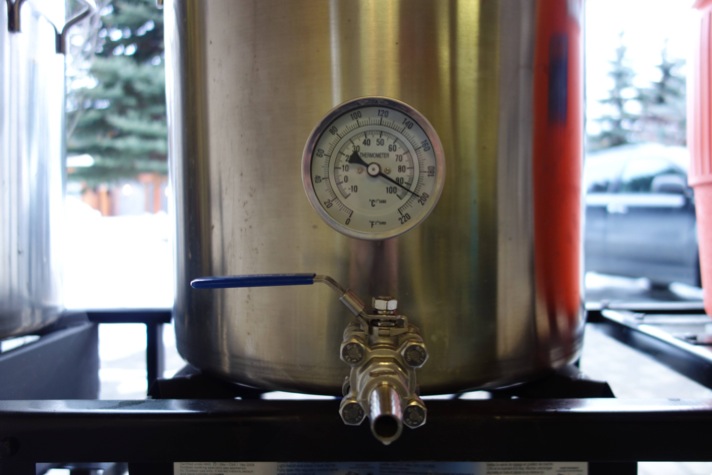
94 degrees, the new 100 degrees
Aside from the mess on the floor, the rest of the boil passed uneventfully, except for a blizzard outside (we made a snowman later!). When it came time to cool and transfer the wort to FV, I did make a few new discoveries though. The first of these was that my new Blichmann Therminator plate chiller, combined with the ridiculously cold ground water (air temperature was probably around minus 5 C) led to a pitching temperature of about 10 degrees. More on this later. Another problem stemmed from my hop additions. I’d decided on a bittering addition of Magnum pellets, with Cascade pellets and Amarillo and Citra leaf hops at 10 minutes and flame out. The main reason for this was that at the local brewing shop here pellets were cheaper and there were more varieties available than leaf hops. Anyway this turned out to be a bit of a problem- I’m used to leaf hops, and didn’t anticipate how quickly such a high percentage of pellets would block the bazooka screen I was using during run off.
Back to that pitching temperature- it was so cold in the garage that after 24 hours of ‘fermentation’ there wasn’t much sign of activity, so I moved the two carboys I was using inside the house to warm up overnight. Unfortunately I forgot that the room I moved them to has underfloor heating, with the result that fermentation went from very cold to very hot in a very short space of time. Not exactly ideal.
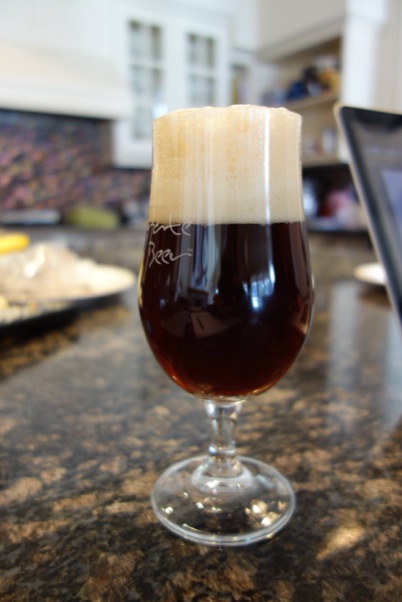
The moment of truth came a couple of weeks later. Unfortunately, not until I’d experienced my first bottle bomb ever- even more cleaning up! And, all things considered, the beer turned out Okay for a first run through the brewing kit. There are some things I would change about the recipe (which you can find here) though. Although final gravity ended up at 1.010, which I thought would be low enough, it still has a bit more body than I would like, so I’d probably cut down on the crystal malt and use more black malt for colour. This sweetness is probably more noticeable because the bitterness is slightly less than I would ideally like it to be, so I’d probably bump that up a few BUs as well. And, though I thought my aroma additions of Citra and Amarillo would be enough to give a fairly strong hop aroma, it didn’t. I still probably wouldn’t want to dry hop this type of beer, so I’ll either need to add a bigger aroma addition next time of find another way of making the addition. Ideally I’d really like a hop back equivalent, but I haven’t decided how I’ll fit that into my current system. Finally, that hot fermentation ended up giving the beer some higher alcohol aromas, though at least that problem should be easier to fix. I’ve got one of these sitting on the kitchen table, so all I need is an old fridge and I should have a temperature controlled fermentation chamber. Or, I could just leave the fermenter in the garage next time...
